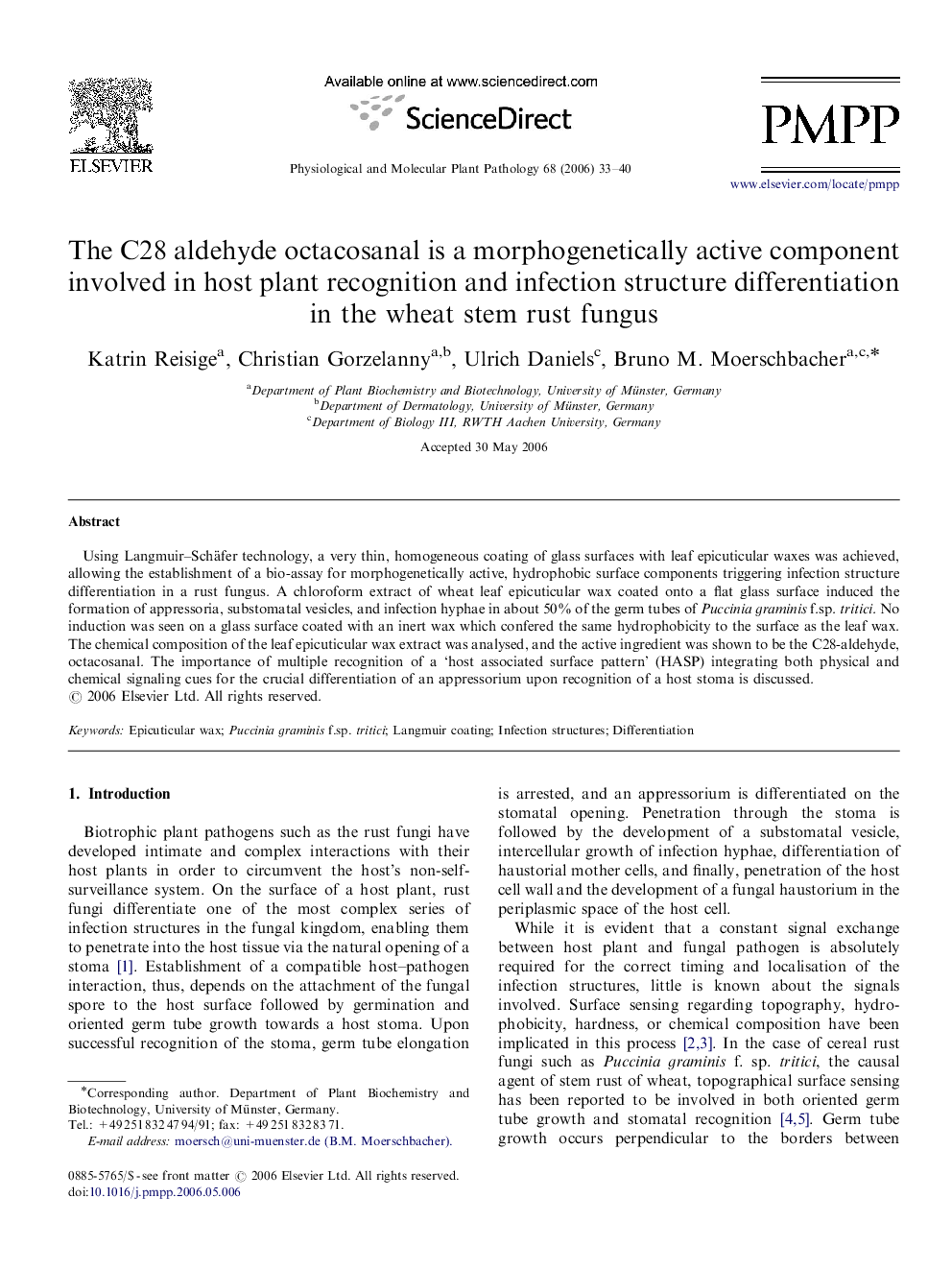| Article ID | Journal | Published Year | Pages | File Type |
|---|---|---|---|---|
| 2836822 | Physiological and Molecular Plant Pathology | 2006 | 8 Pages |
Using Langmuir–Schäfer technology, a very thin, homogeneous coating of glass surfaces with leaf epicuticular waxes was achieved, allowing the establishment of a bio-assay for morphogenetically active, hydrophobic surface components triggering infection structure differentiation in a rust fungus. A chloroform extract of wheat leaf epicuticular wax coated onto a flat glass surface induced the formation of appressoria, substomatal vesicles, and infection hyphae in about 50% of the germ tubes of Puccinia graminis f.sp. tritici. No induction was seen on a glass surface coated with an inert wax which confered the same hydrophobicity to the surface as the leaf wax. The chemical composition of the leaf epicuticular wax extract was analysed, and the active ingredient was shown to be the C28-aldehyde, octacosanal. The importance of multiple recognition of a ‘host associated surface pattern’ (HASP) integrating both physical and chemical signaling cues for the crucial differentiation of an appressorium upon recognition of a host stoma is discussed.
